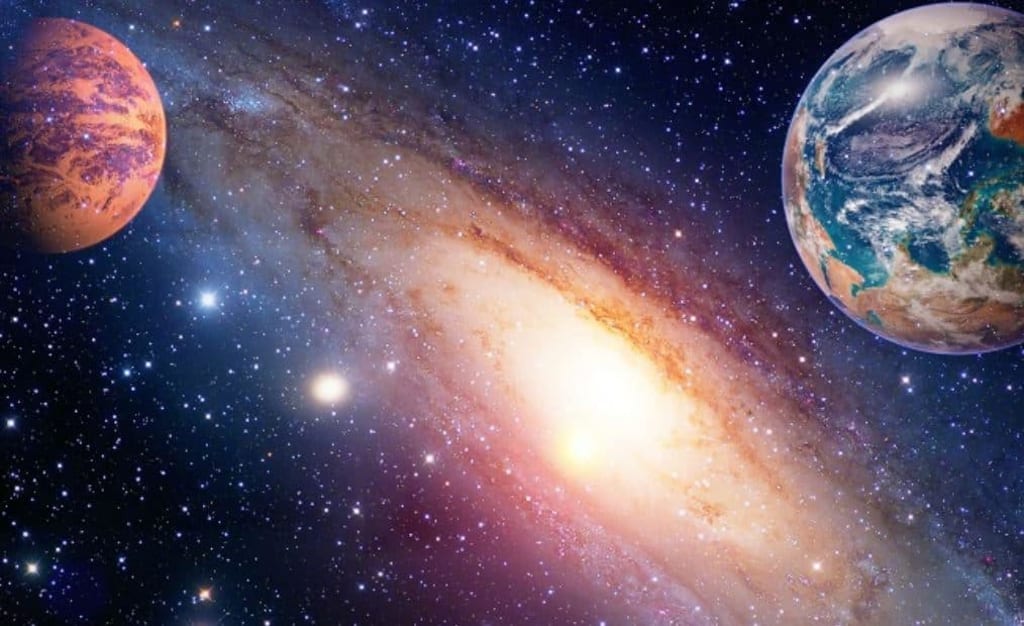
The universe, the boundless expanse of time and space, has captivated human curiosity since time immemorial. From ancient civilizations gazing at the night sky to modern-day astronomers peering through powerful telescopes, the quest to understand the cosmos has been a driving force in our pursuit of knowledge. In this article we embark on a journey to explore the wonders of the universe, unraveling its mysteries and contemplating our place within its vastness.
The universe, estimated to be around 13.8 billion years old, is a cosmic tapestry comprising countless galaxies, stars, planets, and other celestial objects. As we peer into the depths of space, we witness the grandeur of galaxies, swirling clusters of billions or even trillions of stars bound together by gravity. The Milky Way, our home galaxy, is just one among billions, each with its own unique composition and characteristics.
Stars, the luminous beacons of the universe, are born from vast clouds of gas and dust. Their immense gravitational forces cause these clouds to collapse, igniting nuclear fusion in their cores. This process releases an incredible amount of energy, giving birth to a star. Stars come in various sizes, from the mighty blue giants many times larger than our sun to the small, dim red dwarfs that burn gently for billions of years.
Planets, the celestial 0bjects we are most familiar with, orbit around stars, including our own sun. They come in a staggering array of sizes and compositions. Some are rocky, like our home planet Earth, while others gaseous giants like Jupiter and Saturn. Over the years, astronomers have discovered thousands of exoplanets, planets orbiting distant stars, sparking the tantalizing possibility of finding other habitable worlds beyond our solar system.
Beyond galaxies, stars, and planets, the Universe is teeming with enigmatic phenomena that challenge our understanding of the laws of physics. Black holes, for instance, are regions of space where gravity is so intense that nothing, not even light, can escape their gravitational pull. These cosmic monsters, formed from the remnants of massive stars, continue to mystify scientists as they delve into the intricacies of their nature and behavior.
Cosmic expansion is another mind-boggling concept that has shaped our understanding of the universe. Edwin Hubble's groundbreaking observations in the 1920s revealed that galaxies are moving away from each other, suggesting that the universe is expanding. The discovery led to the development of the Big Bang theory, which posits that the universe originated from a singular, incredibly dense and hot state, and has been expanding ever since.
As we explore the universe, we also ponder the possibility of life beyond Earth. The search for extraterrestrial intelligence, or SETI continues to captivate the imagination of scientists and enthusiasts alike. With the discovery of potentially habitable exoplanets and the tantalizing signs of liquid water on celestial bodies like Jupiter's moon Europa and Saturn's moon Enceladus, the prospects of finding microbial or even intelligent life elsewhere in the universe have never been more intriguing.
The study of the universe is a testament of human ingenuity and our insatiable thirst for knowledge. From the ancient astronomers who mapped the stars to the modern-day space missions that probe distant worlds, our understanding of the cosmos continuos to evolve. Every discovery, every observation, and every new piece of information brings us closer to unraveling the profound.
The universe is all of space and time and their contents, including planets, stars, galaxies, and all other forms of matter and energy. The Big Bang theory is the prevailing cosmological description of the development of the universe. According to this theory, space and time emerged together 13.787±0.020 billion years ago, and the universe has been expanding ever since the Big Bang.





Comments
There are no comments for this story
Be the first to respond and start the conversation.